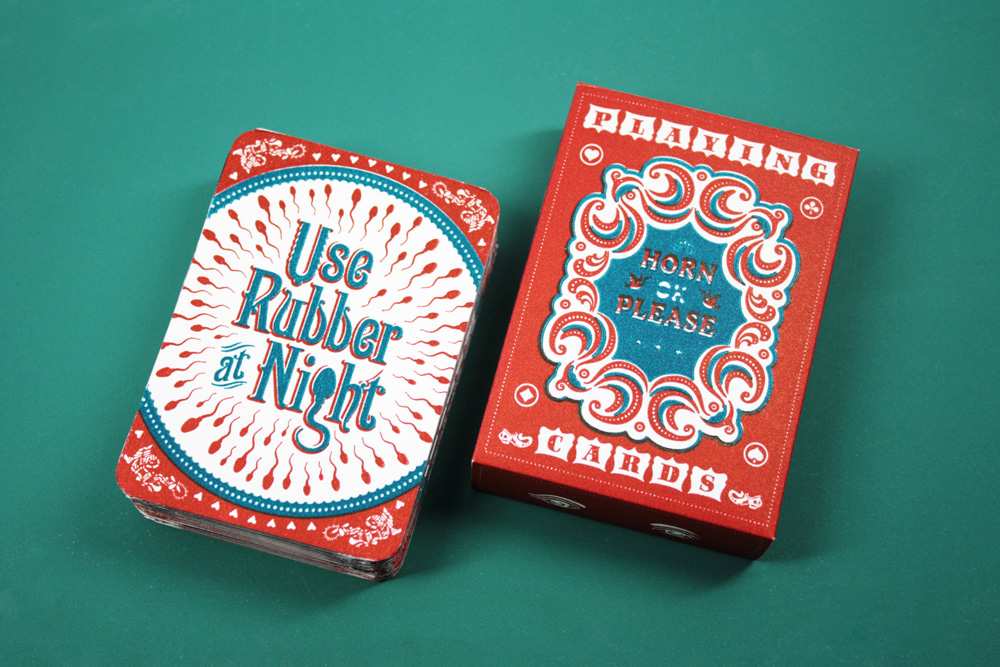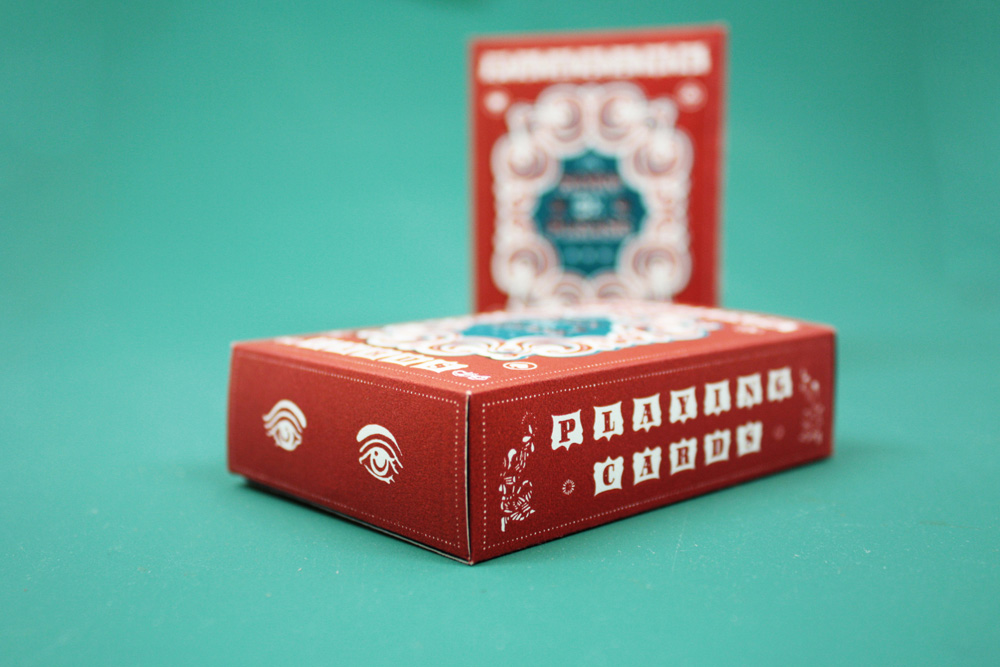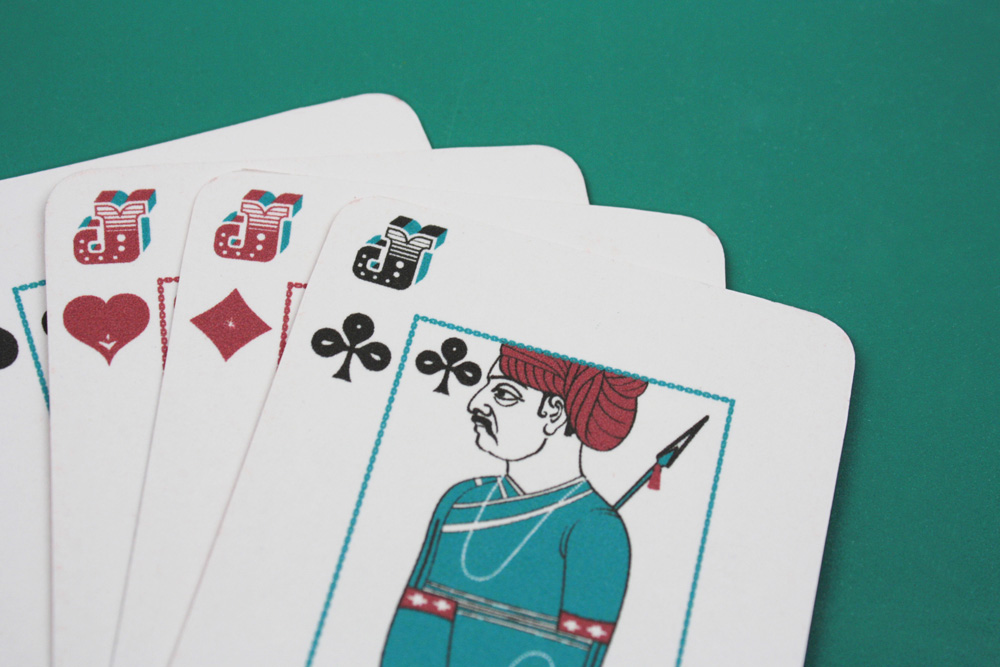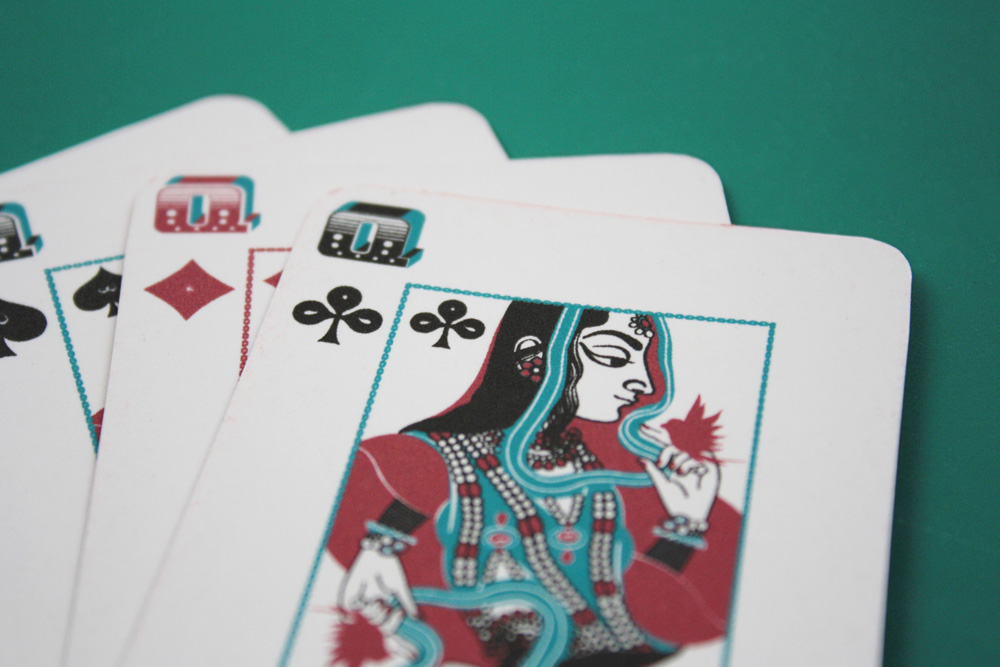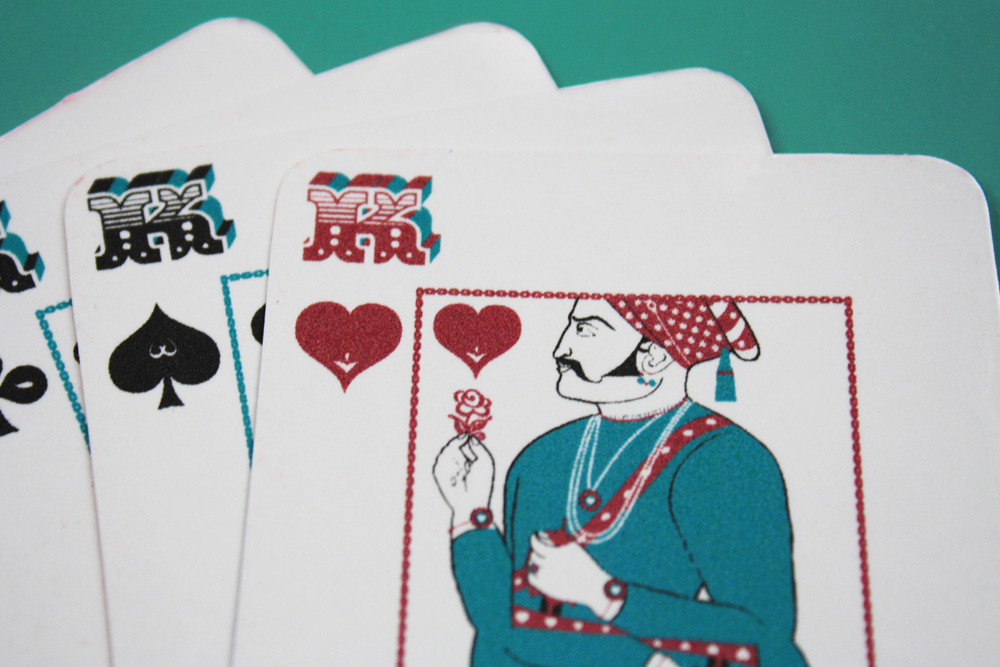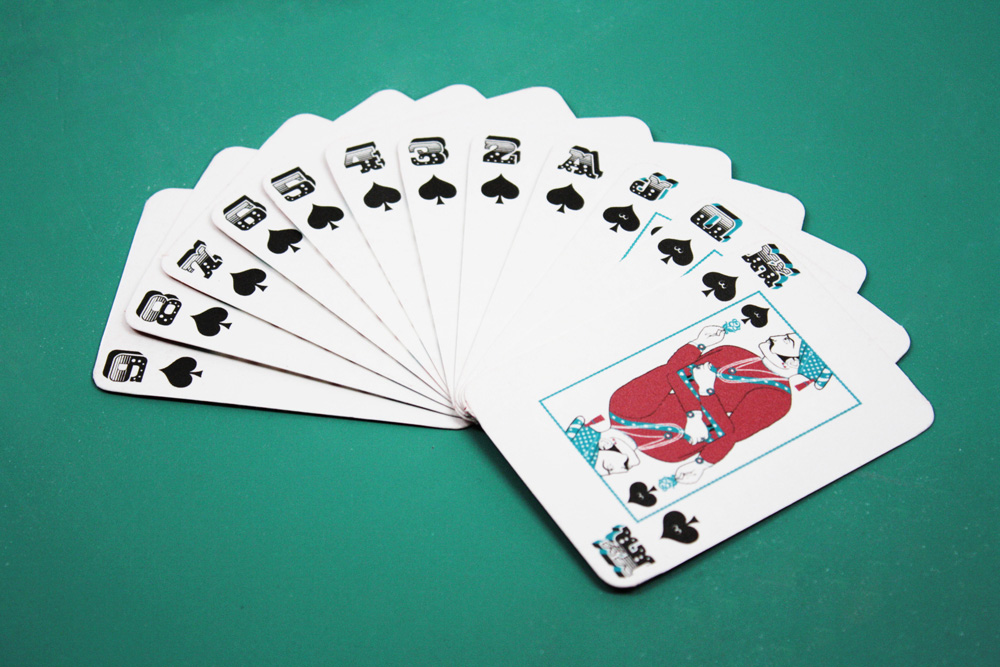Horn Please Exhibit
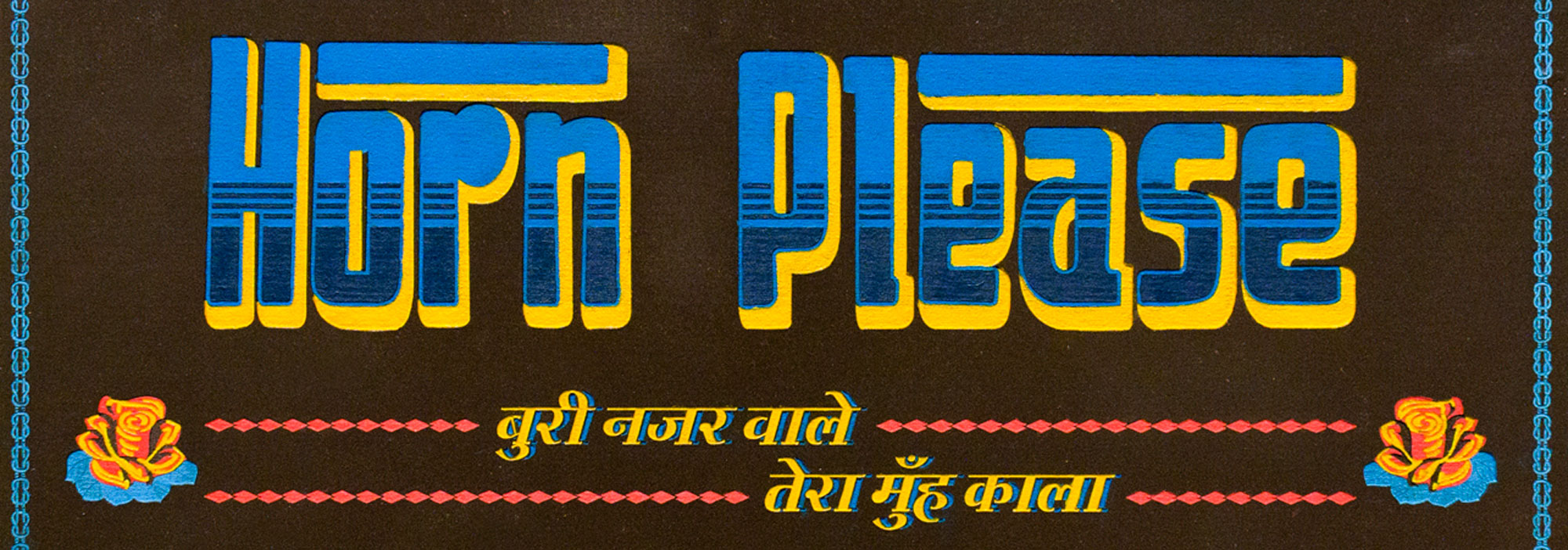
The exhibit’s name, “Horn Please,” was derived from a painted message seen behind the trucks in India. It signals the vehicles behind the trucks to blow the horn before overtaking.
I designed the space to imitate the side panels of an Indian truck and create a connection between the truck design and gallery walls. Divided neatly into sections, as it would be divided onto a real truck, the space was then hand painted to establish the laborious work that goes into the painting of an Indian truck. The exhibition space consisted of two walls—a green-colored wall to display the design elements inspired by the truck art of India and an orange-colored wall to promote the documentary.
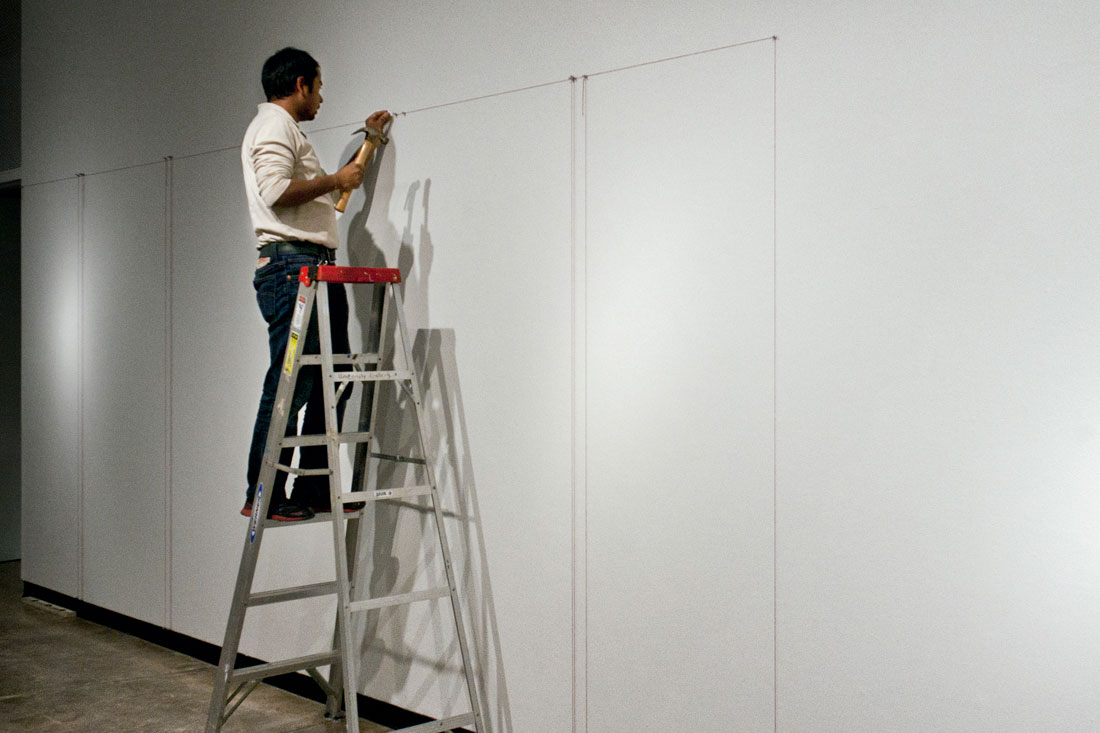
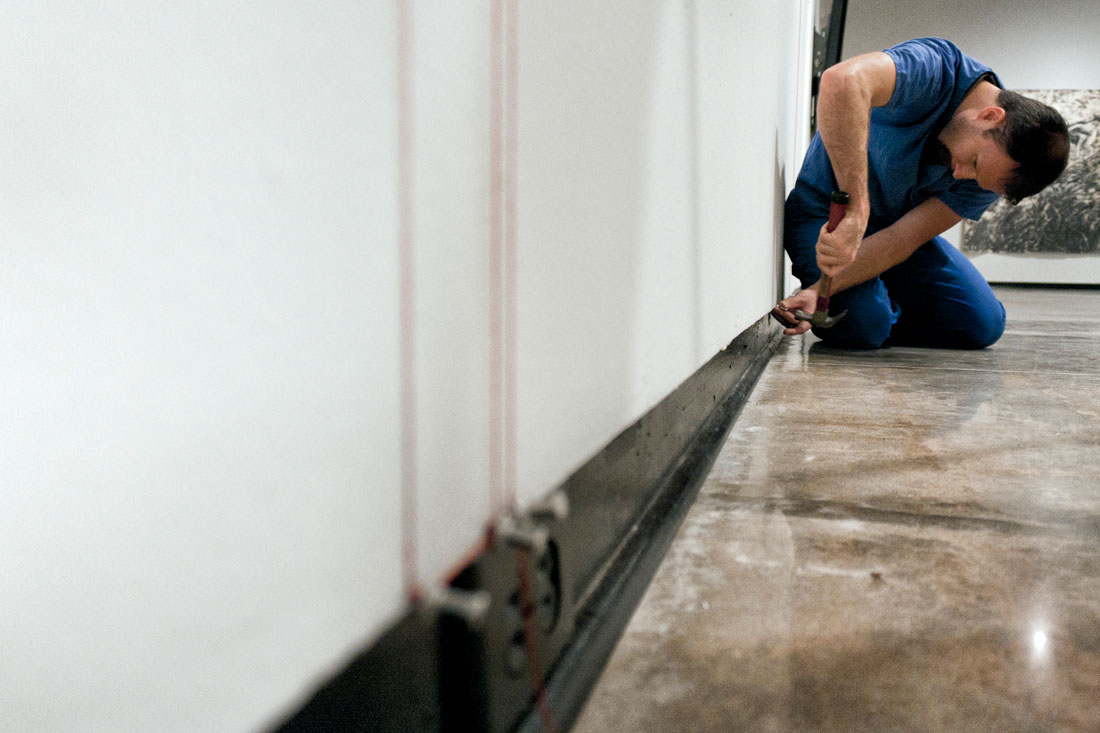
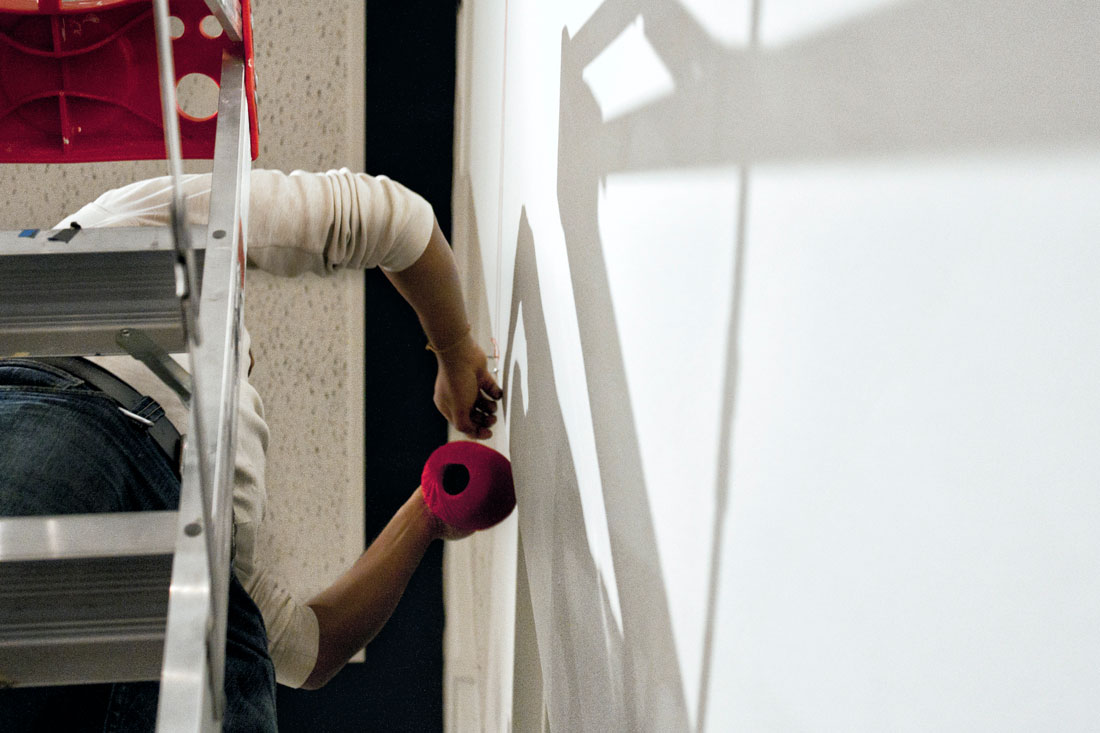
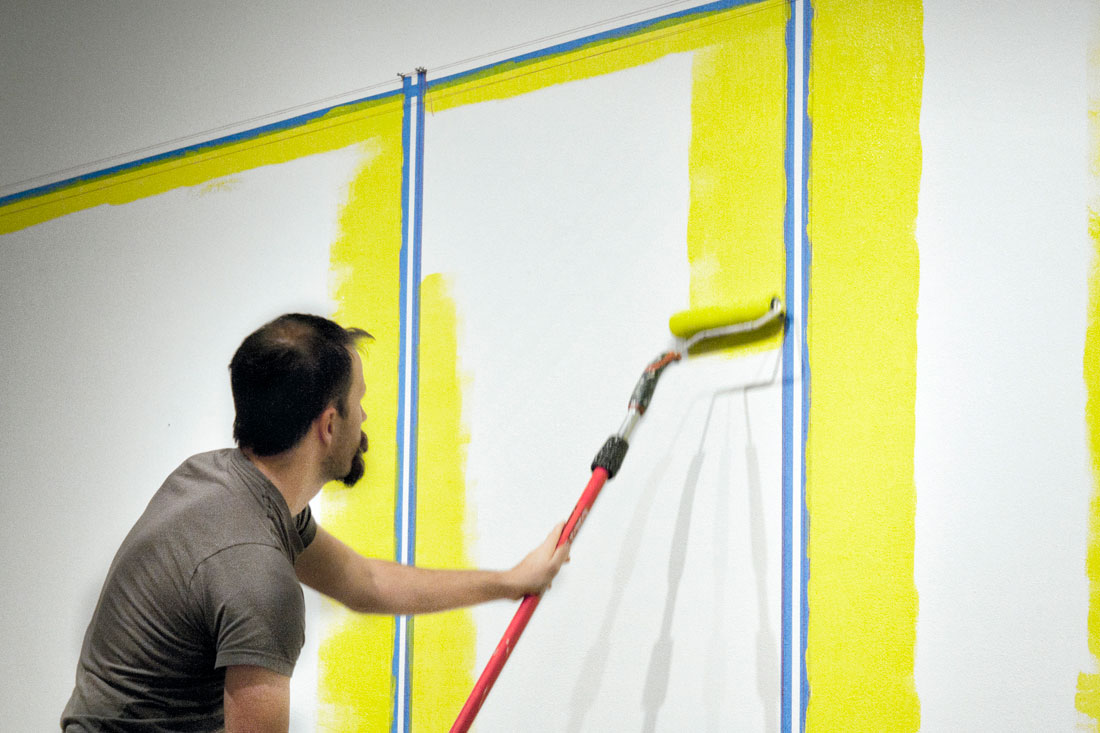
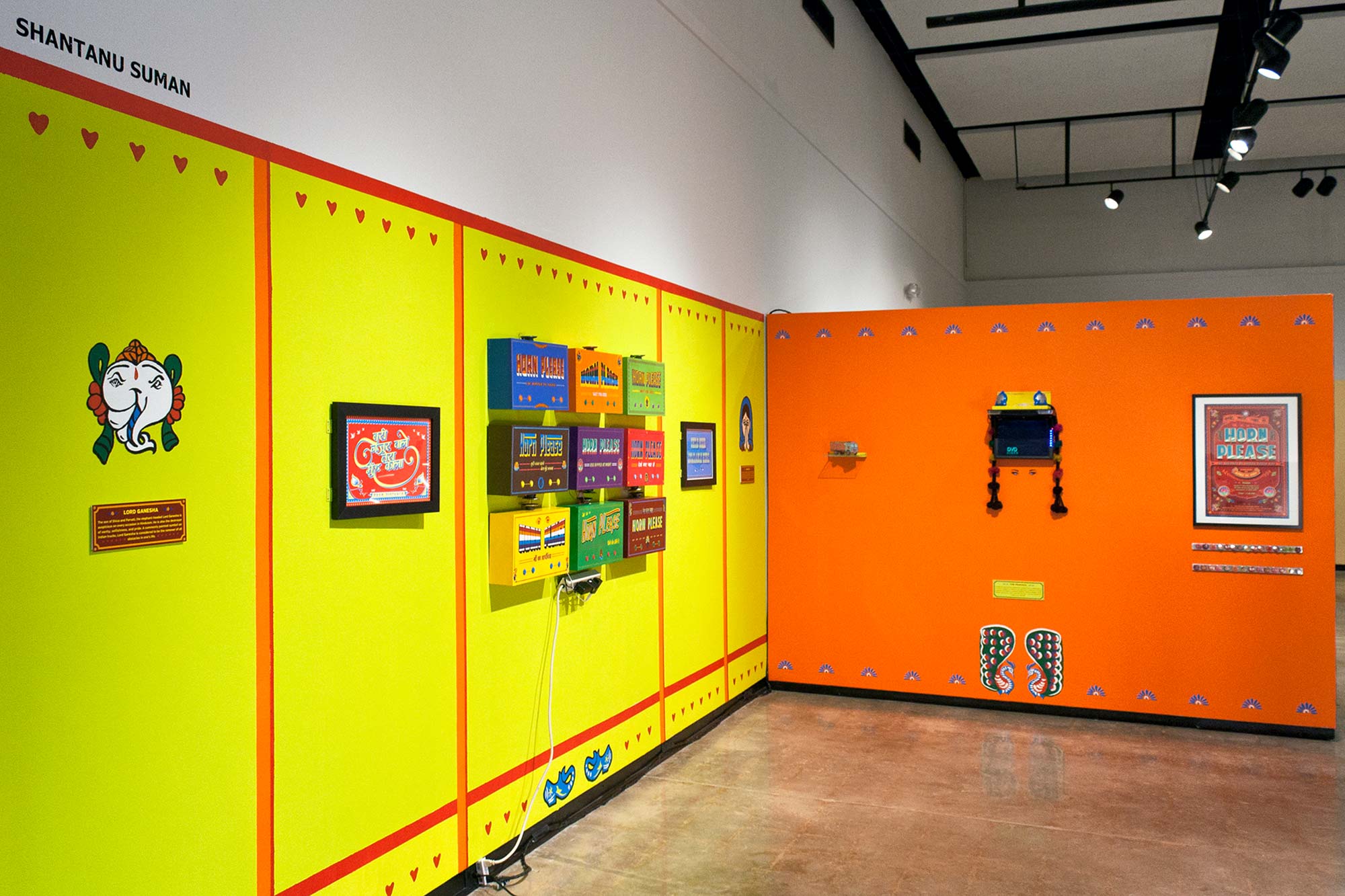
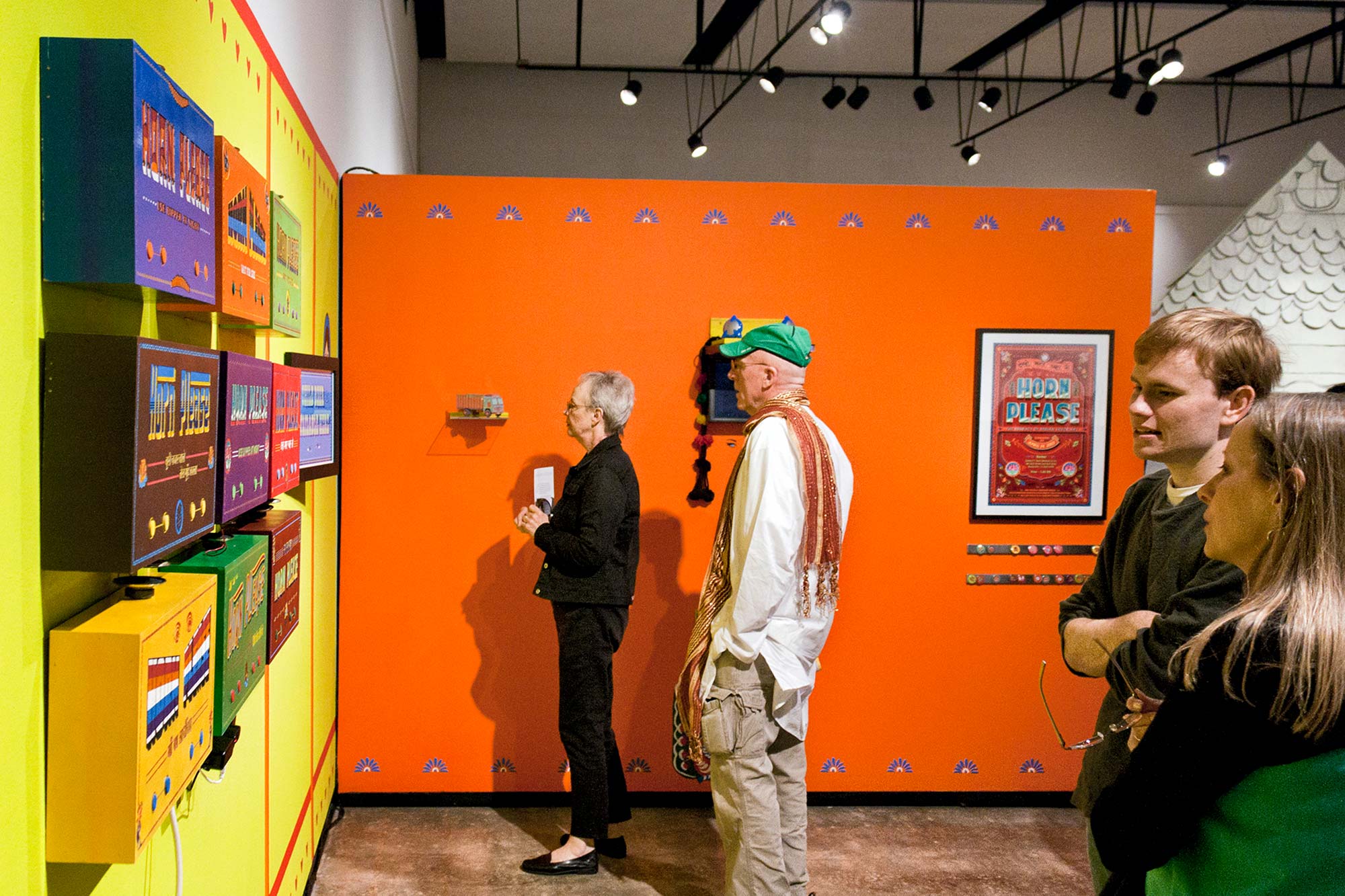
In the early days, the Indian trucks used to have horns with just a single pitched sound. However, with the technological advancements, horns with multiple-pitched and pre-recorded sounds were introduced. These horns sound like a musical instrument when used and have made the act of honking fun. This ornamentation of the sound makes the noise seem less rude to others traveling on the highway. Inspired by this observation, nine musical wooden boxes were designed and laboriously hand-painted to carry the exhibition title—Horn Please. Each box was equipped with four buttons that produced different pitched sounds.
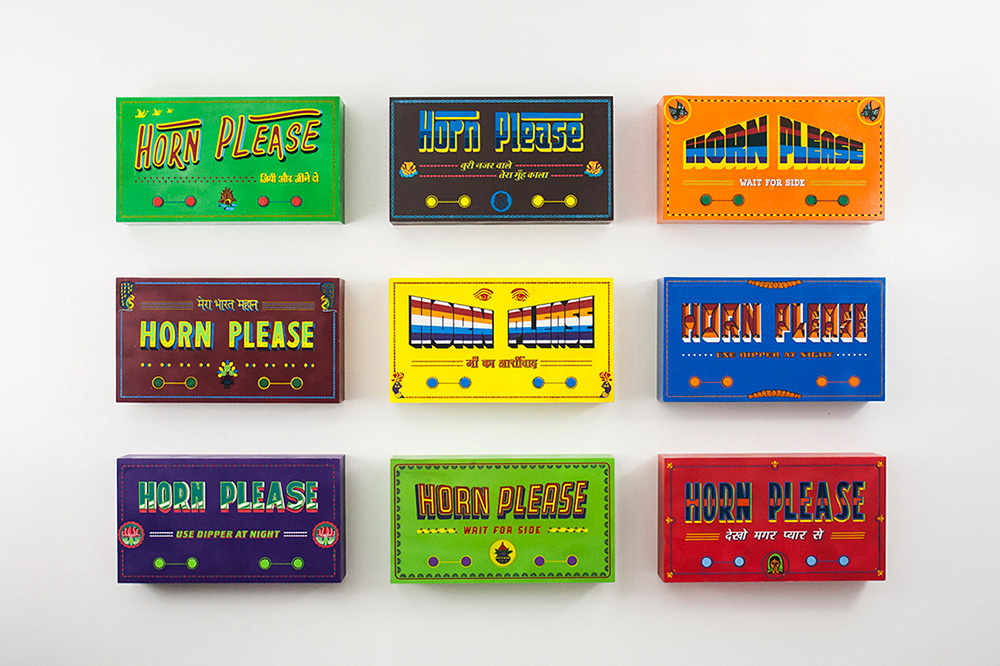
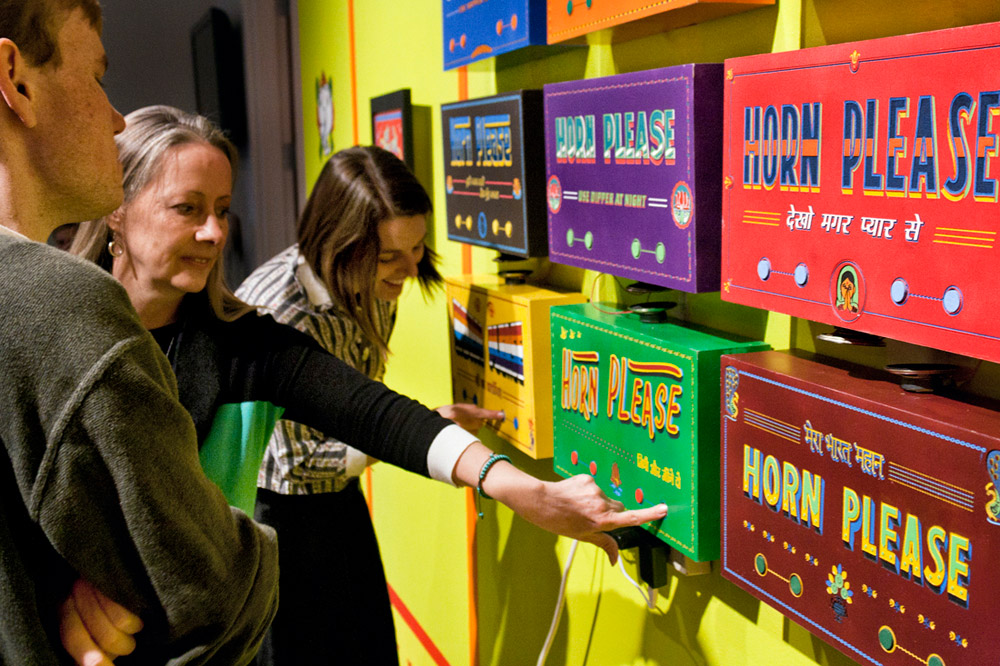
Horn Please—the exhibition’s name—was etched onto the wooden pieces and assembled into boxes to hang onto the exhibition walls. The etching was accomplished using a laser cutter, and the boxes were assembled in the wood shop.
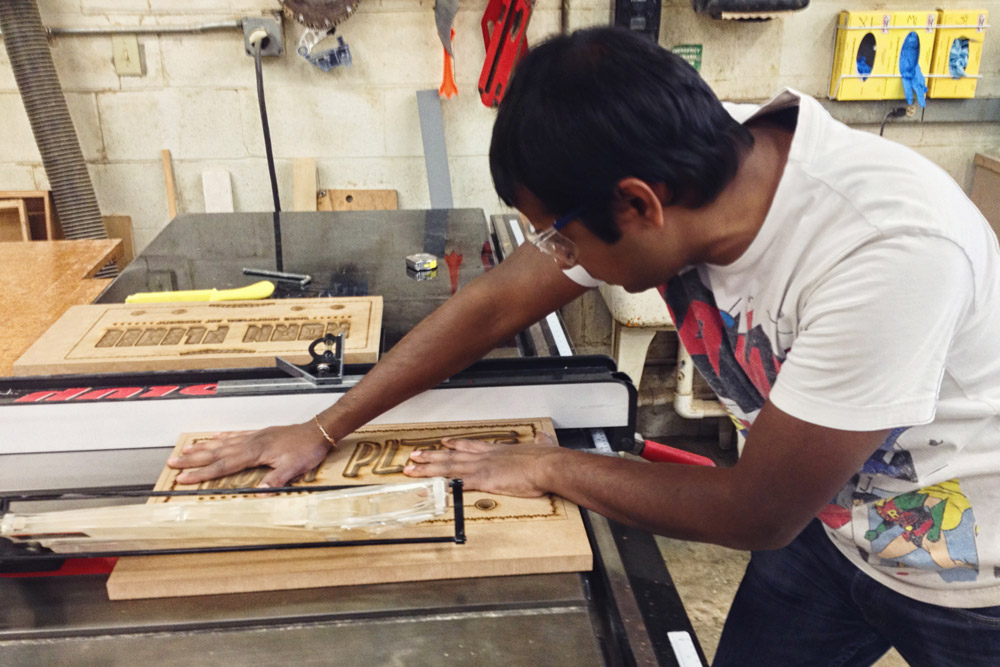
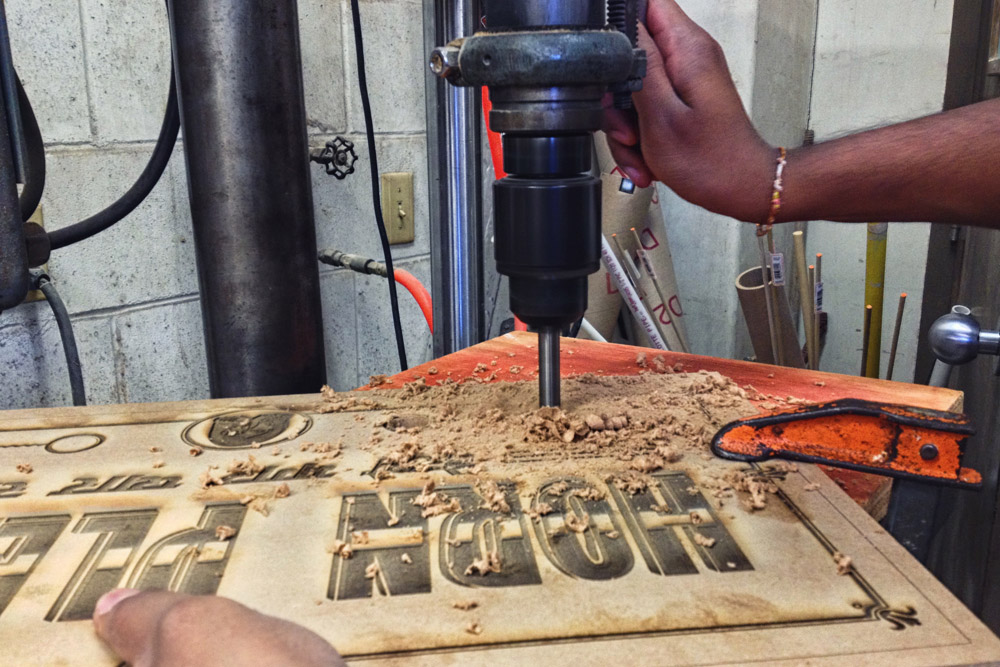
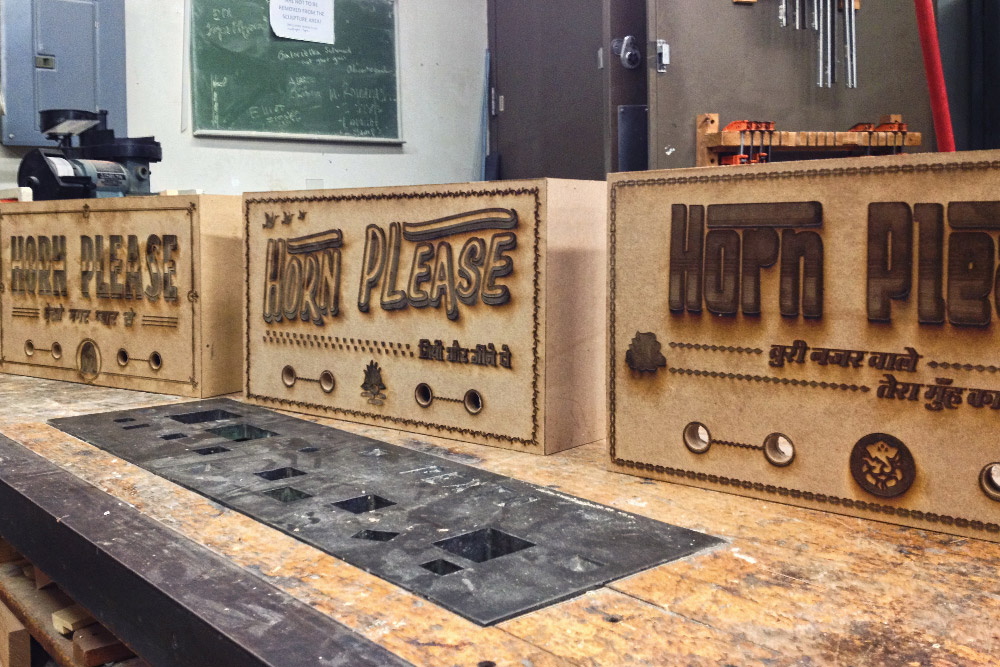
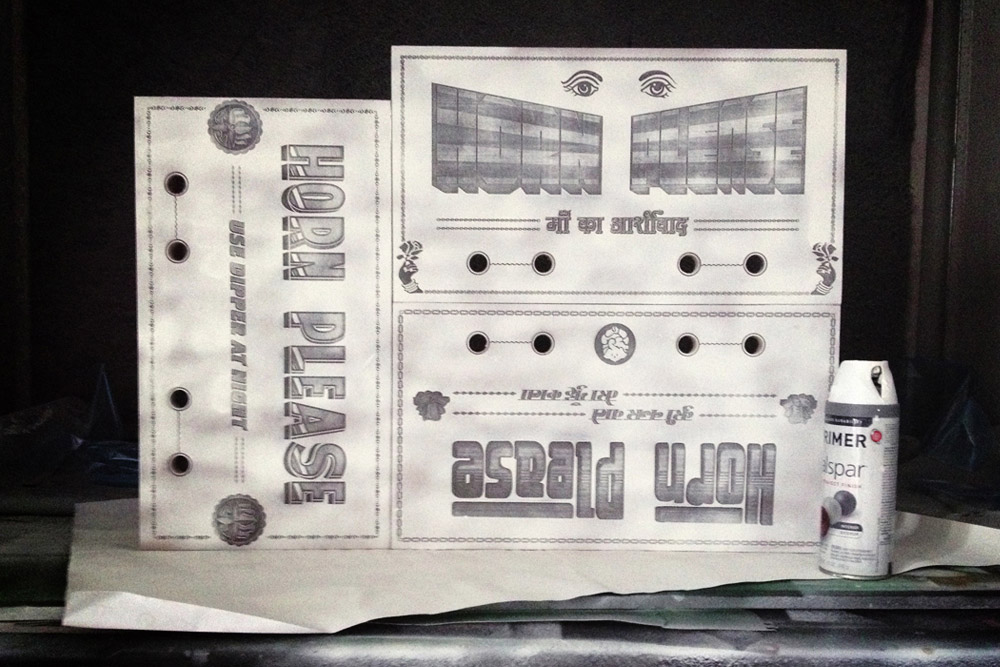
A miniature Indian truck prototype was designed using 3D modeling software and printed using a 3D printer.
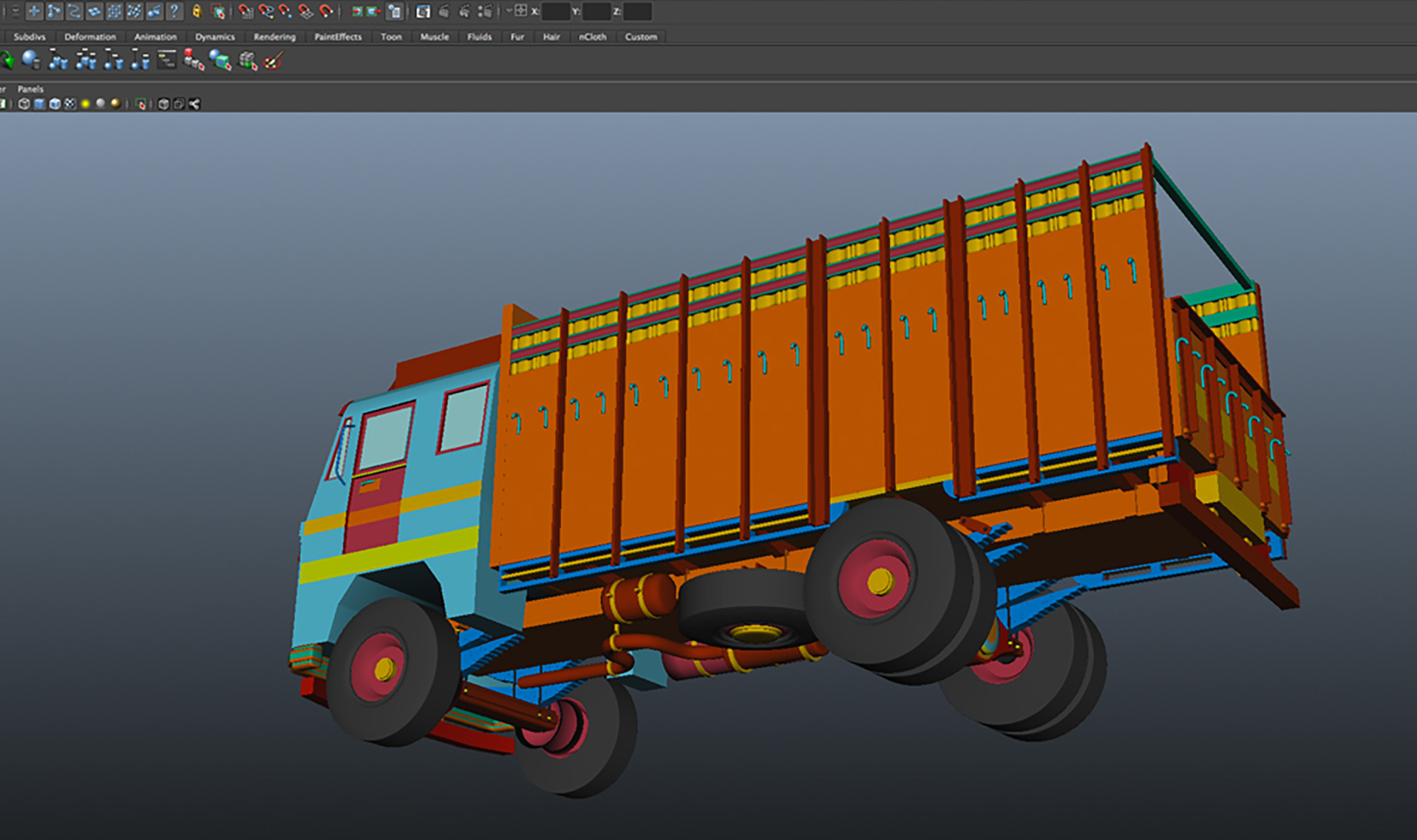
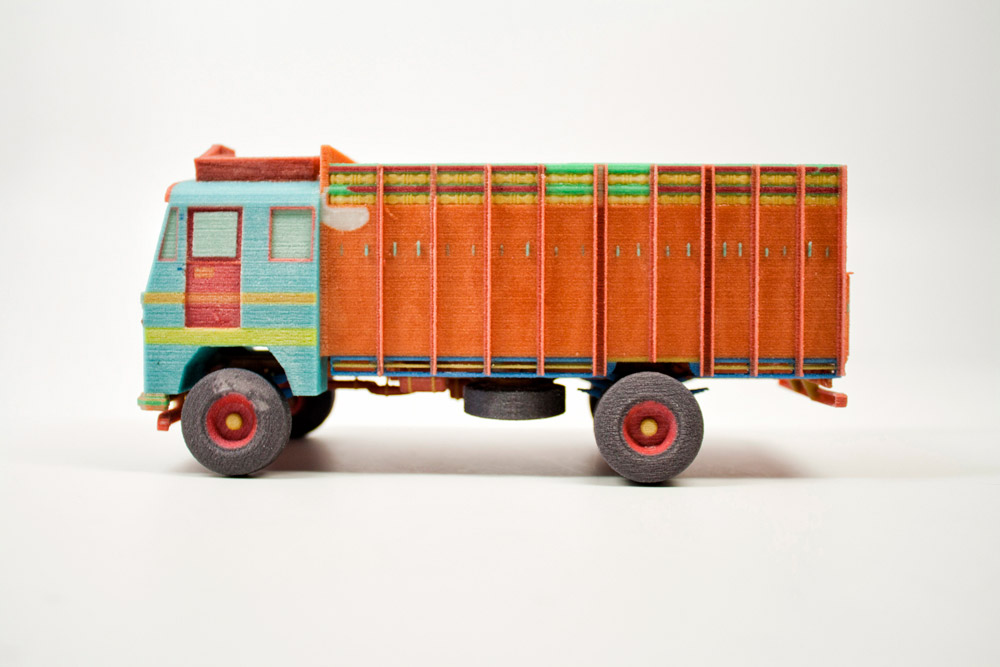

I designed and screen-printed two posters with popular phrases related to the truck industry in India. Both the posters were double-sided prints, and the frames were handmade in the wood shop.
Buri Nazar Waale, Tera Muh Kaala, is a famous slogan on the back of Indian trucks that wards off evil intentions. The phrase warns the jealous people that their faces will be blackened with their devious intentions if they look slyly at your success. This slogan is used as a totem of good luck.
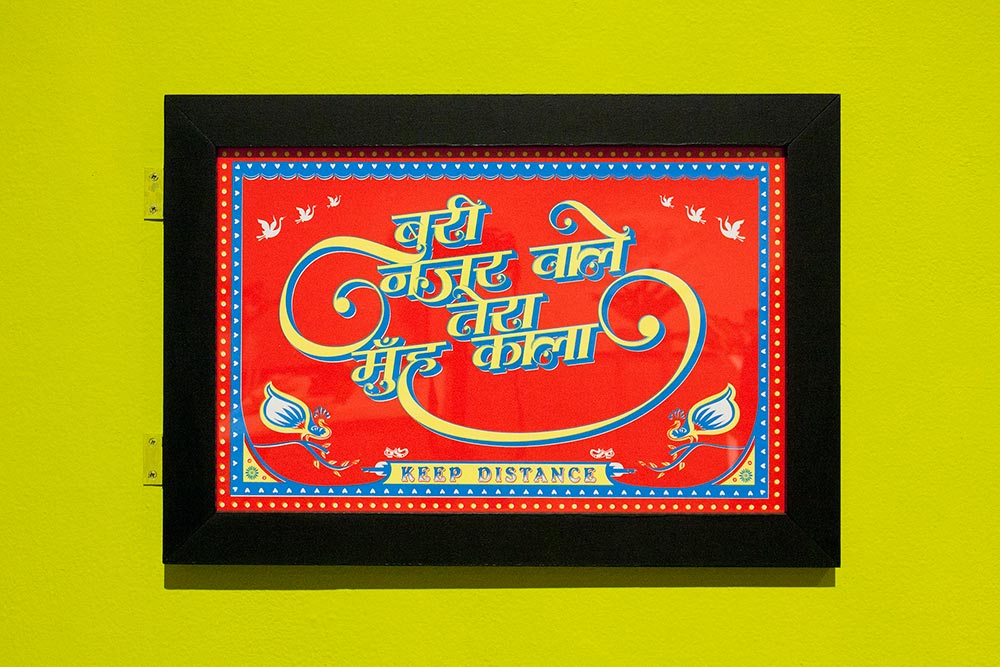
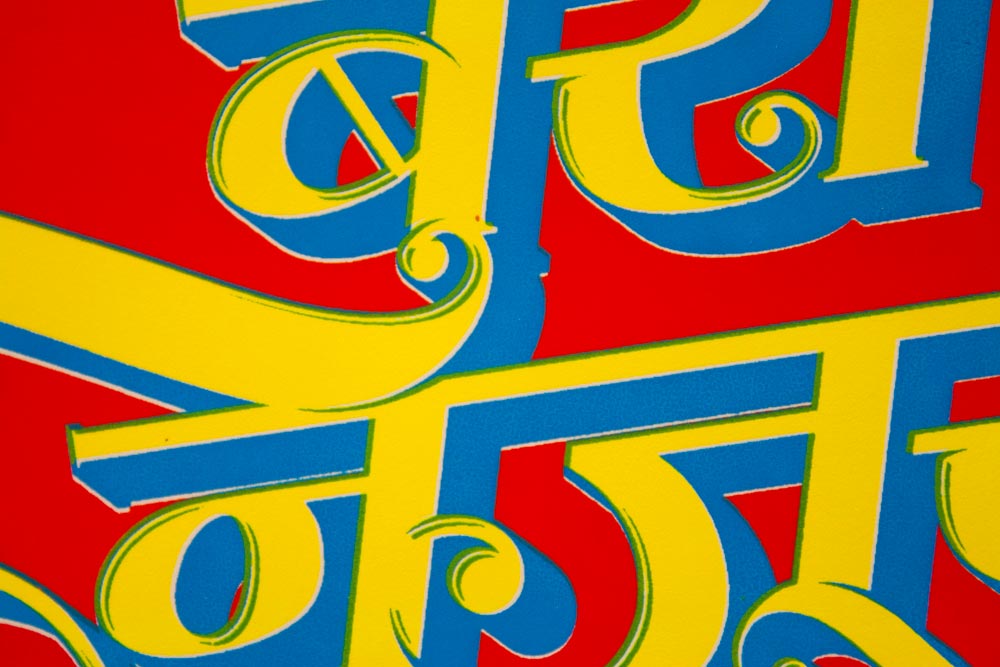
Child Beer Available Here, a signage often seen at various beer shops along the highways of India, is a rather funny phenomenon of a wrongly spelled phrase becoming a traditional way of conveying the message. The signage was originally intended to say Chilled Beer Available Here.
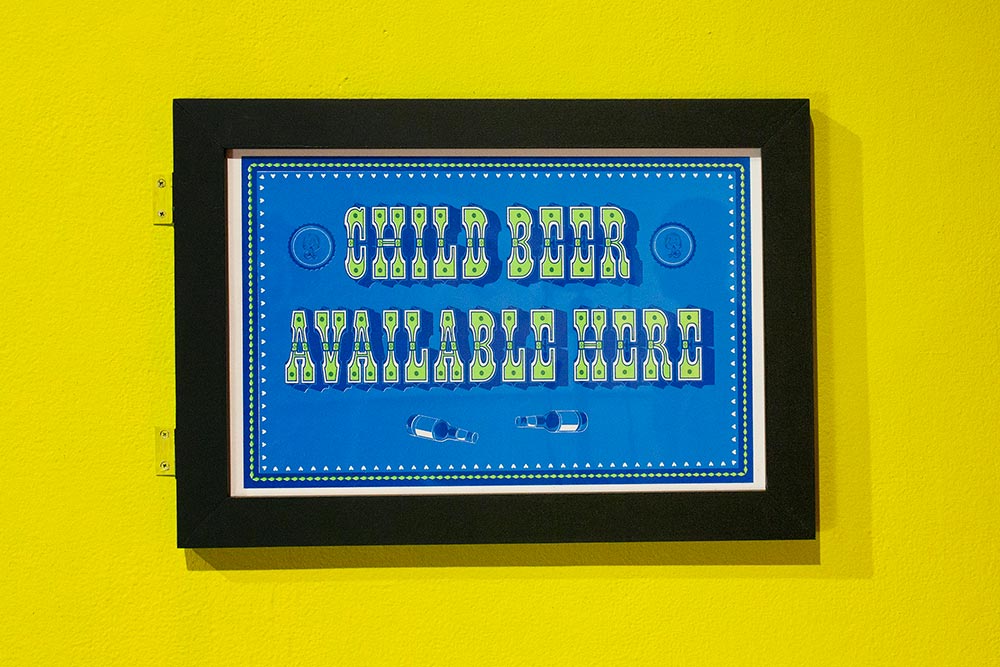
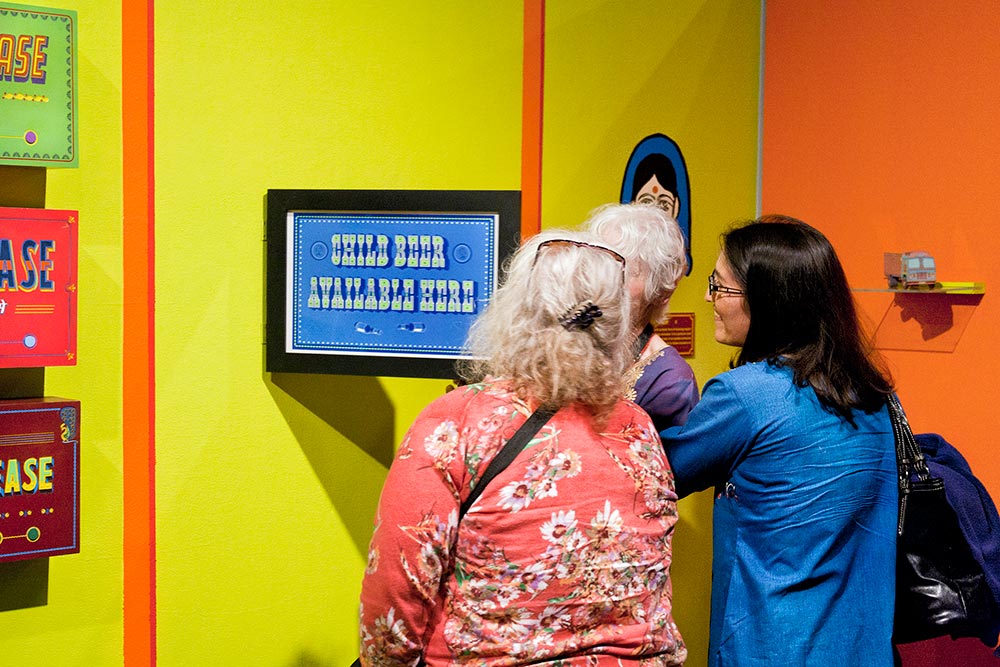
The Trucking Industry of India has played a significant role in Indian trade and commerce for decades. Truckopoly — a variant of the popular board game monopoly is adapted and designed based on the truck industry of India. The game’s objective is to become the wealthiest truck owner through buying, renting, and selling property and goods across the country. The game involves various rules that have to be followed by the truck drivers while transporting goods from one city to another. The challenge is to stay on the top while incurring losses in fines and penalties.
Inspired by the truck art of India, the design of Truckopoly brings alive the vibrant and flamboyant expression of the popular culture. The tokens used to play the game are small handmade trucks made of clay. Instead of buying houses and hotels in monopoly, this game will let players own branch offices (offices within the city for booking and delivering goods) and warehouses (more prominent distribution centers outside the city). Instead of railroads, players can buy petrol pumps, and the income and luxury taxes have been transformed into the National Permit tax and Fitness tax.
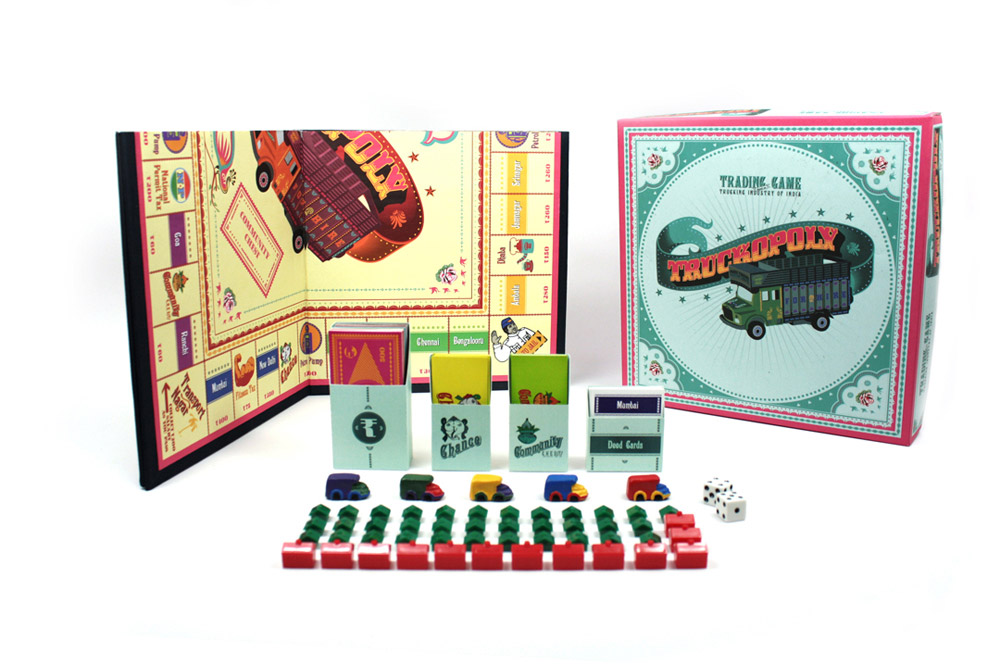
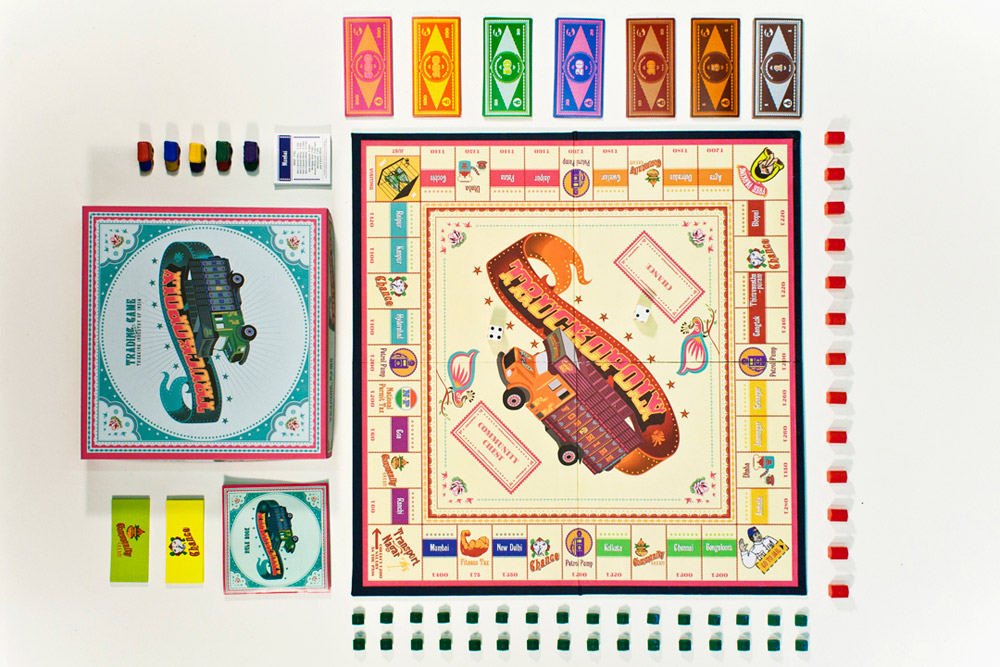
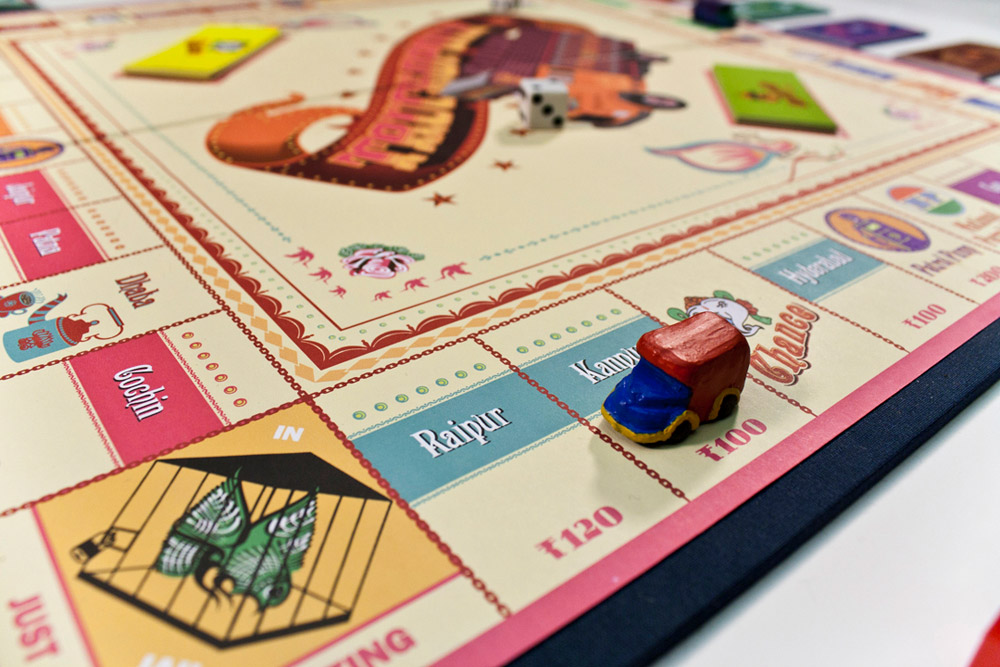
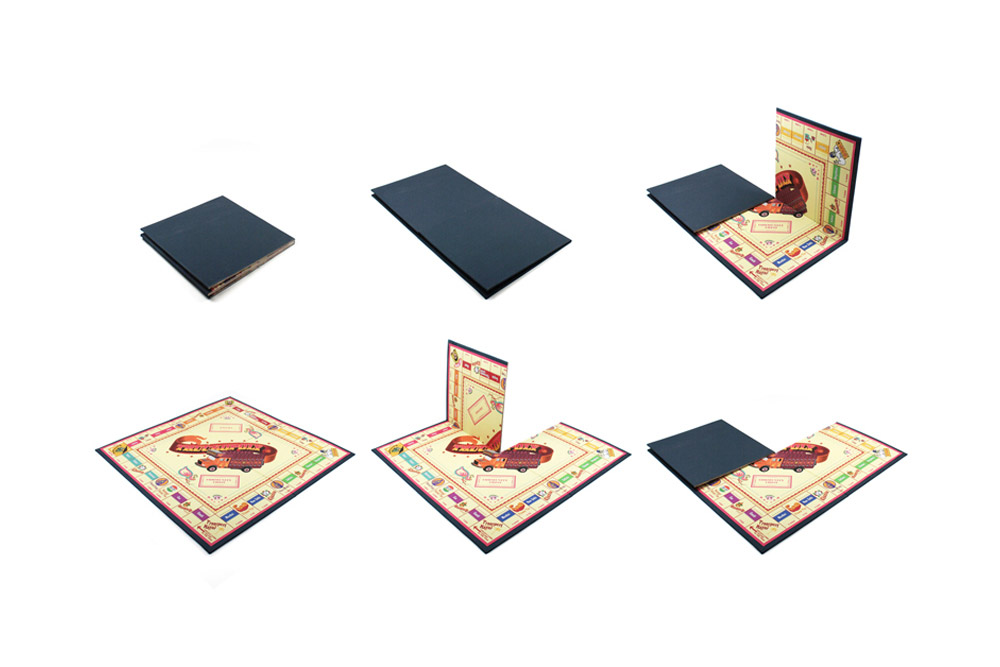
The Indian roads and highways look beautiful and colorful, thanks to the bright hand-painted trucks and lorries. However, a startling study (conducted by the Center for Media Studies in 2010) indicated that India had over 5.1 million AIDS patients, and truckers are possibly one of the largest groups carrying the disease. Therefore, there was an urgent need to create awareness among this community to curb the spread of the fatal disease. More than illiteracy, ignorance, and long distance from home and their wives are the reasons behind the spread of the disease among the truckers’ community.
Card games are the most common recreational activity among truckers in India, which led to the inception of this set of playing card designs. This pack is a small step toward spreading awareness about AIDS among its users, especially the truck drivers. The playing card design has been inspired by the common phrase ‘Use dipper at night’ seen quite often on the back of Indian trucks. The message has been altered to suit the purpose and now reads ‘Use rubber at night,’ which is an important reminder to the user to use condoms while having sex. The Indian Truck Art Style has inspired the design of the cards. Lady with the lamp and 3D treatment of the typography are some of the standard features of the Indian Truck Art Style. Even the characters (king, queen, jack & joker) have been illustrated in the traditional Indian painting style to give the work an Indian feel. The printing method includes a mix of letterpress and inkjet printing.
